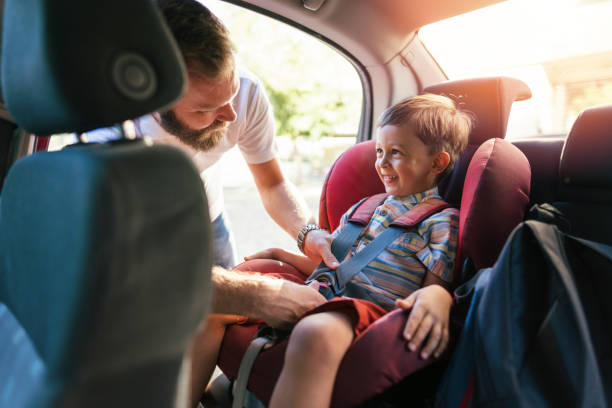Buckling up is one of the simplest and most effective ways to protect yourself while traveling in a vehicle. Here are key points to know:
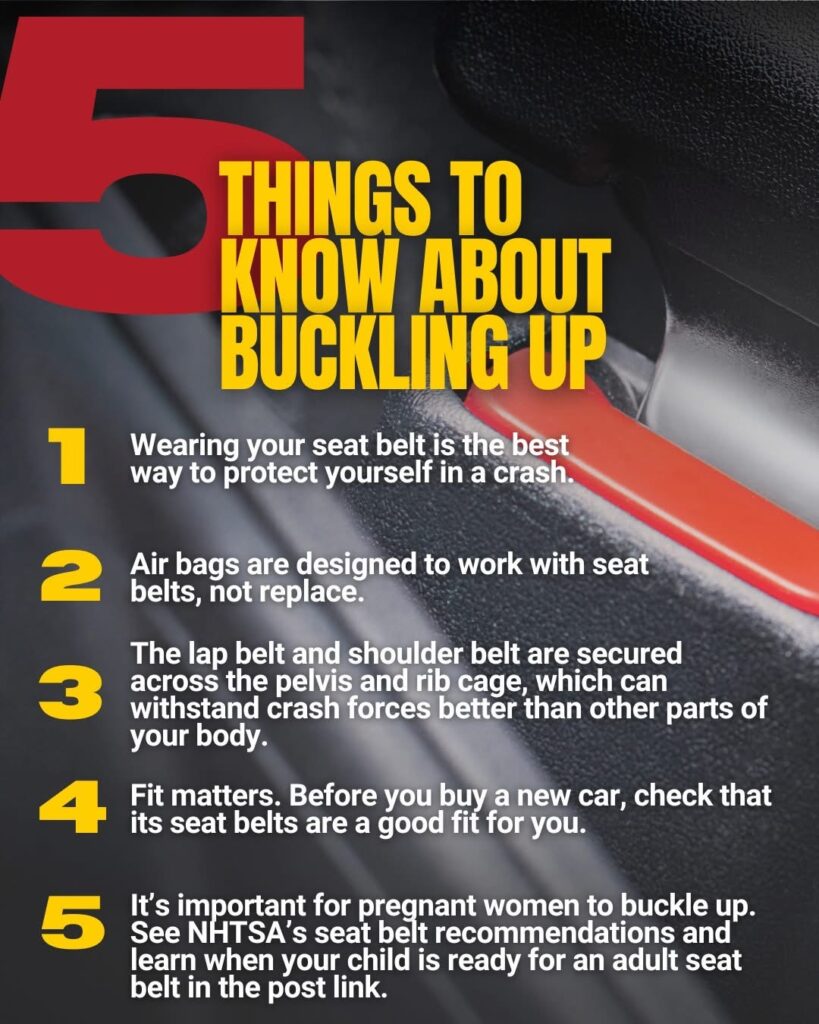
- Safety First: Wearing a seatbelt significantly reduces the risk of serious injury or death in the event of a crash. It keeps you securely in place during sudden stops or collisions.
- Legal Requirement: In many countries and states, wearing a seatbelt is the law for both drivers and passengers. Failing to buckle up can result in fines and penalties.
- Prevents Ejection: Seatbelts help keep you inside the vehicle during an accident, reducing the likelihood of being thrown from the car, which greatly increases the risk of fatality.
- Proper Fit: A seatbelt should fit snugly across your chest (not your neck) and across your hips (not your abdomen). Ensure the lap belt is positioned low across your pelvis, not over your stomach.
- Airbags and Seatbelts Work Together: Seatbelts keep you in the correct position so airbags can deploy effectively. Without a seatbelt, airbags may not protect you properly.
- Rear Seats Matter Too: It’s not just the driver and front passengers who need to buckle up—rear-seat passengers are also at risk if unbelted, and they can also injure others in the vehicle.
- Child Safety: Children should always be in the appropriate car seat, booster seat, or seatbelt based on their age, height, and weight. This ensures optimal protection in case of an accident.
- Inertia and Force: During a crash, your body can keep moving forward at the same speed as the car was traveling. A seatbelt applies force to slow you down gradually, preventing serious injuries.
- No Excuses: Even on short trips or at low speeds, buckling up is essential. Accidents can happen anywhere, and it’s always better to be safe than sorry.
- Habit: Make buckling up a habit every time you get in a car, whether you’re the driver or a passenger. It only takes a few seconds and could save your life.
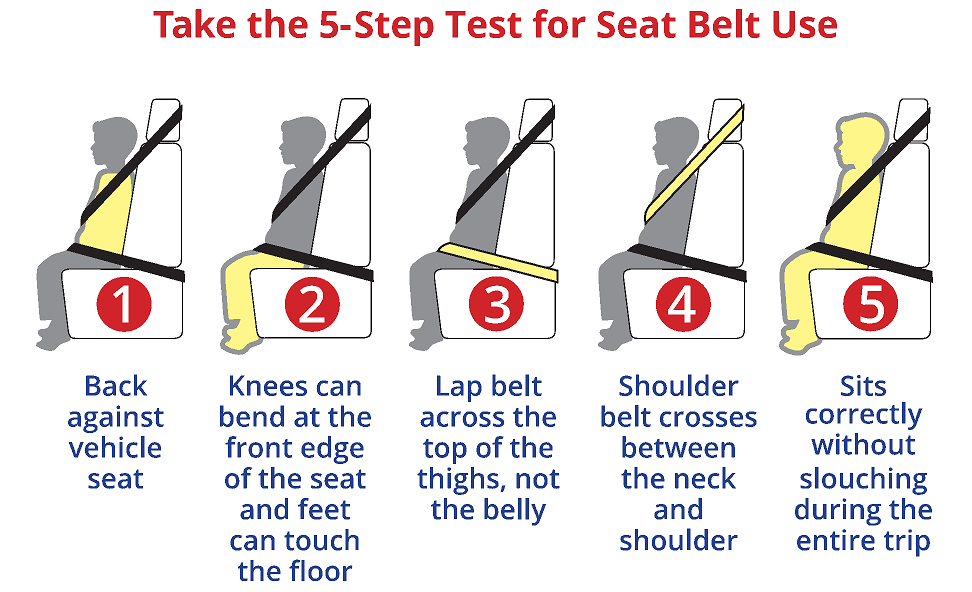
Seatbelt safety is crucial for protecting yourself in a vehicle, especially during a crash. Here’s what you need to know:
1. Proper Fit
- Lap Belt: The lap portion of the seatbelt should lie low on your hips, across the pelvic bones, not across your stomach. This helps prevent internal injuries in case of an accident.
- Shoulder Belt: The shoulder belt should cross your chest and rest snugly on your shoulder, not your neck. It should never be placed behind your back or under your arm, as it can increase the risk of injury.
2. Buckle Up Every Time
- Always wear your seatbelt, no matter how short the trip or how slow the speed. Crashes can happen in seconds, and seatbelts are proven to reduce the risk of death and serious injury.
3. Seatbelt for Every Passenger
- All passengers, not just the driver, should wear their seatbelt. In fact, rear-seat passengers who don’t buckle up are just as much at risk and can even cause harm to others in the vehicle.
4. Don’t Adjust or Remove During the Ride
- Once your seatbelt is fastened, leave it in place for the duration of the ride. Avoid adjusting, loosening, or removing the belt during the trip. Even a slight alteration can reduce its effectiveness in protecting you.
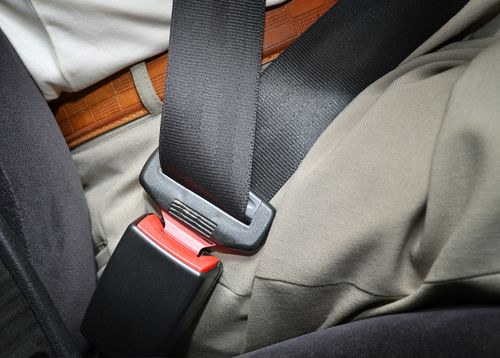
5. Airbag and Seatbelt Interaction
- Airbags work in tandem with seatbelts. A seatbelt keeps you positioned in the right place so the airbag can deploy properly. Without a seatbelt, the airbag could push you into the dashboard or window, leading to more severe injuries.
6. Child Safety
- Children should be in the appropriate car seat, booster seat, or seatbelt based on their size and age. An improperly restrained child in a crash can suffer severe injuries. Always follow guidelines for child car seat use to ensure maximum safety.
7. Use Seatbelts Correctly
- Seatbelts are designed to secure the body in place during a crash, but they need to be worn correctly to be effective. Avoid twisting the belt or using it incorrectly (e.g., placing the shoulder strap under the arm or behind the back).
8. Avoid the “Pregnant Belt” Mistake
- Pregnant women should wear the seatbelt properly: the lap belt should be placed low, under the belly, and across the pelvic bones. The shoulder belt should cross between the breasts and to the side of the belly, not across it. This reduces the risk of harm to both mother and baby in the event of a crash.
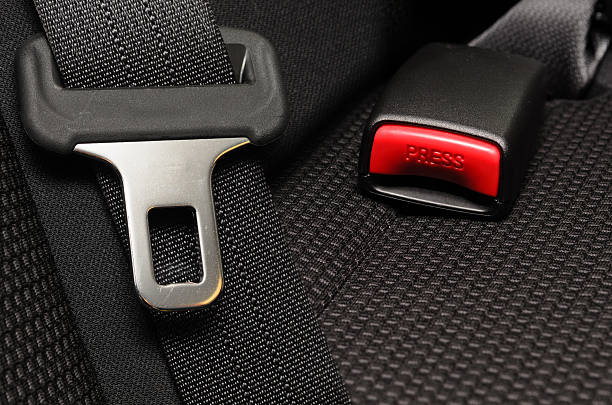
9. Vehicle-Specific Features
- Many modern vehicles have additional safety features, such as seatbelt reminders and automatic tightening systems, which make seatbelt use even safer. Make sure your seatbelt is adjusted and functioning properly to take advantage of these features.
10. Seatbelt Myths
- Myth: “I’m just going around the corner, I don’t need a seatbelt.”
- Fact: Accidents can happen even at low speeds or short distances. Always buckle up.
- Myth: “I’ll be fine if I just hold onto the door.”
- Fact: Holding onto the door doesn’t protect you during a crash and can actually make things worse. The seatbelt is designed to protect you by keeping you in place.
Conclusion:
Wearing a seatbelt is one of the easiest and most effective ways to reduce the risk of injury or death in a crash. It only takes a few seconds to buckle up, but it can make all the difference in a collision. Always ensure that every person in the car, regardless of their seat, is securely fastened.
Buckle Up. ✅ Every Trip. ✅ Every Time. ✅
Contact Doylestown Auto Repair at 267-279-9477 or visit our website at www.doylestownautoshop.com to schedule an appointment to have your car serviced.
